Suspension and Steering
TVR, in their infinite wisdom, decided to use a rubbery plastic bush to support the lower end of the steering column, where it passes through the footwell into the wheelarch. Needless to say, this gets all the crap that the tyre sprays up and thus wears, allowing the column to move around and generally detracting from the whole steering experience. The offending item looks like this:
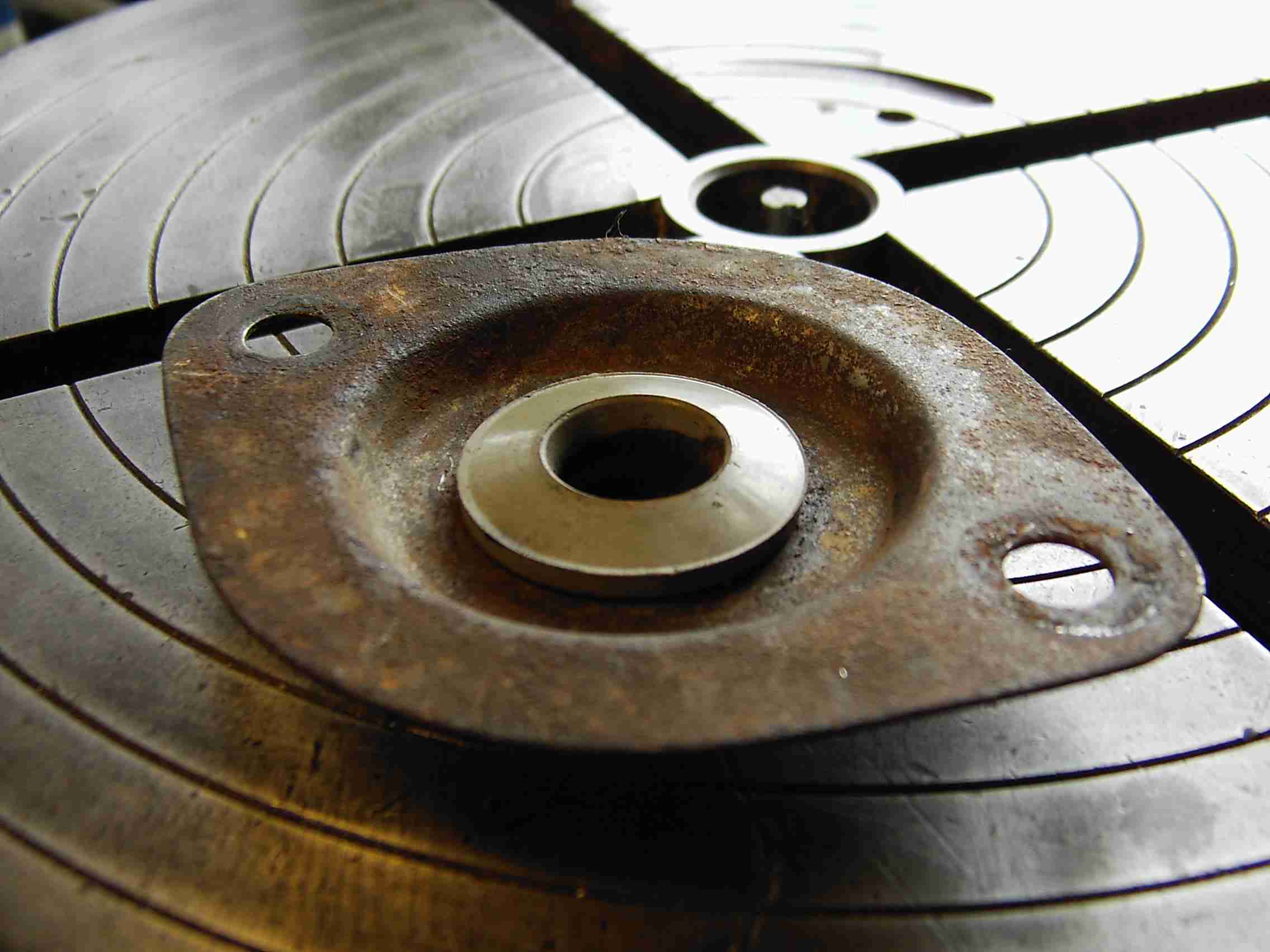
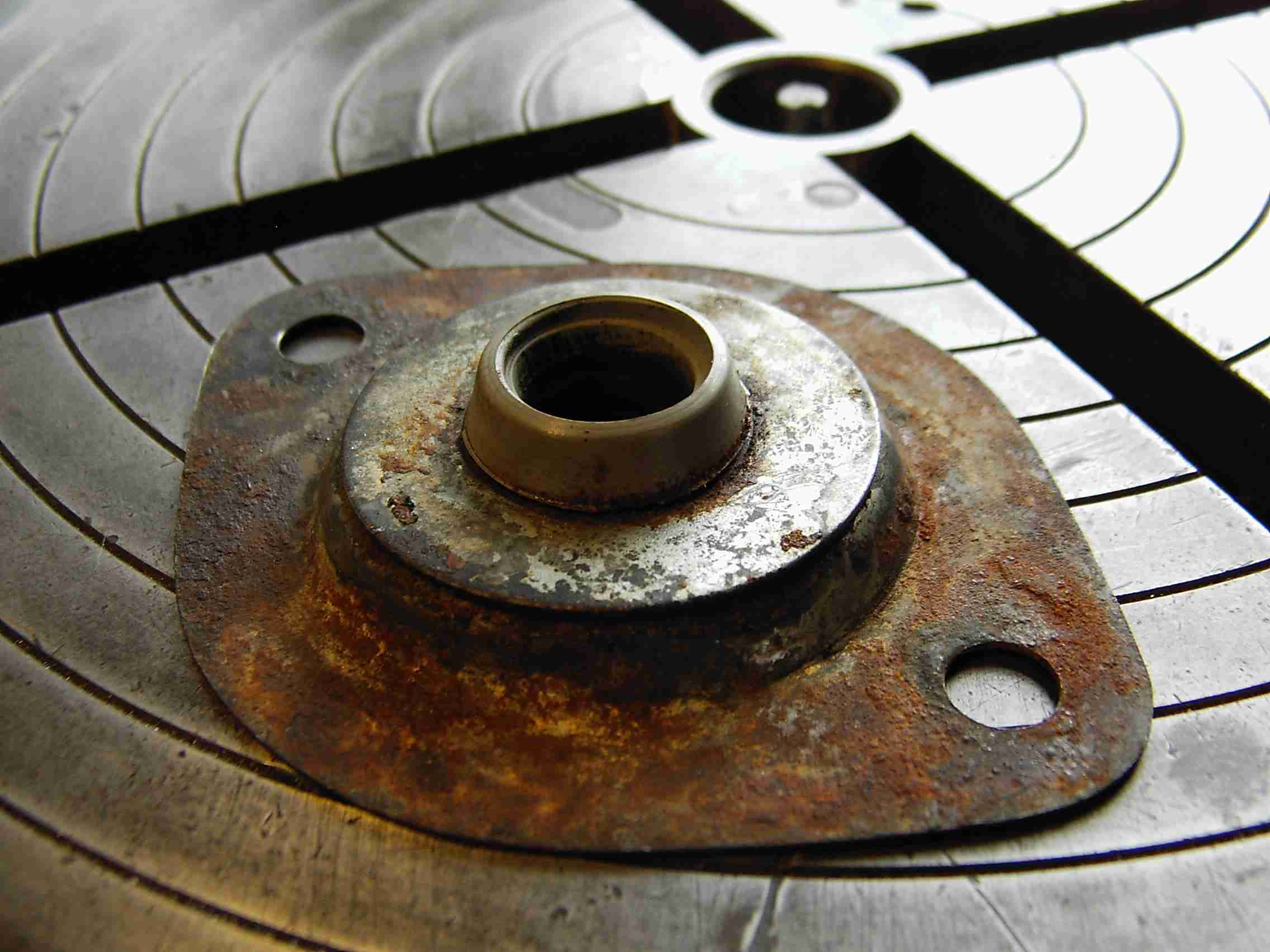
Some time back, one of the Pistonheads crowd devised a modification using a sealed ball bearing held by two elliptical plates. These are often used in industrial machinery to support long shafts where they pass through sheet metalwork. It would appear that the different steering columns used over the years had different diameters: I think the old TR7 column was half-inch, whereas the SD1 item as used on the 390SE is 14mm. Unfortunately, 14mm is not a standard ball bearing bore size. I purchased a 17mm item and turned down a brass sleeve on the lathe. The sleeve is a snug fit around the column and the bearing has two grubscrews to lock it's inner race to the shaft, so with a drop of Loctite for good measure there's not much chance of the column moving around in the sleeve! Now it would probably have been a good idea to take photos as I was progressing... but I didn't, as the camera batteries were flat. By the time they'd charged up, I'd reached this stage:
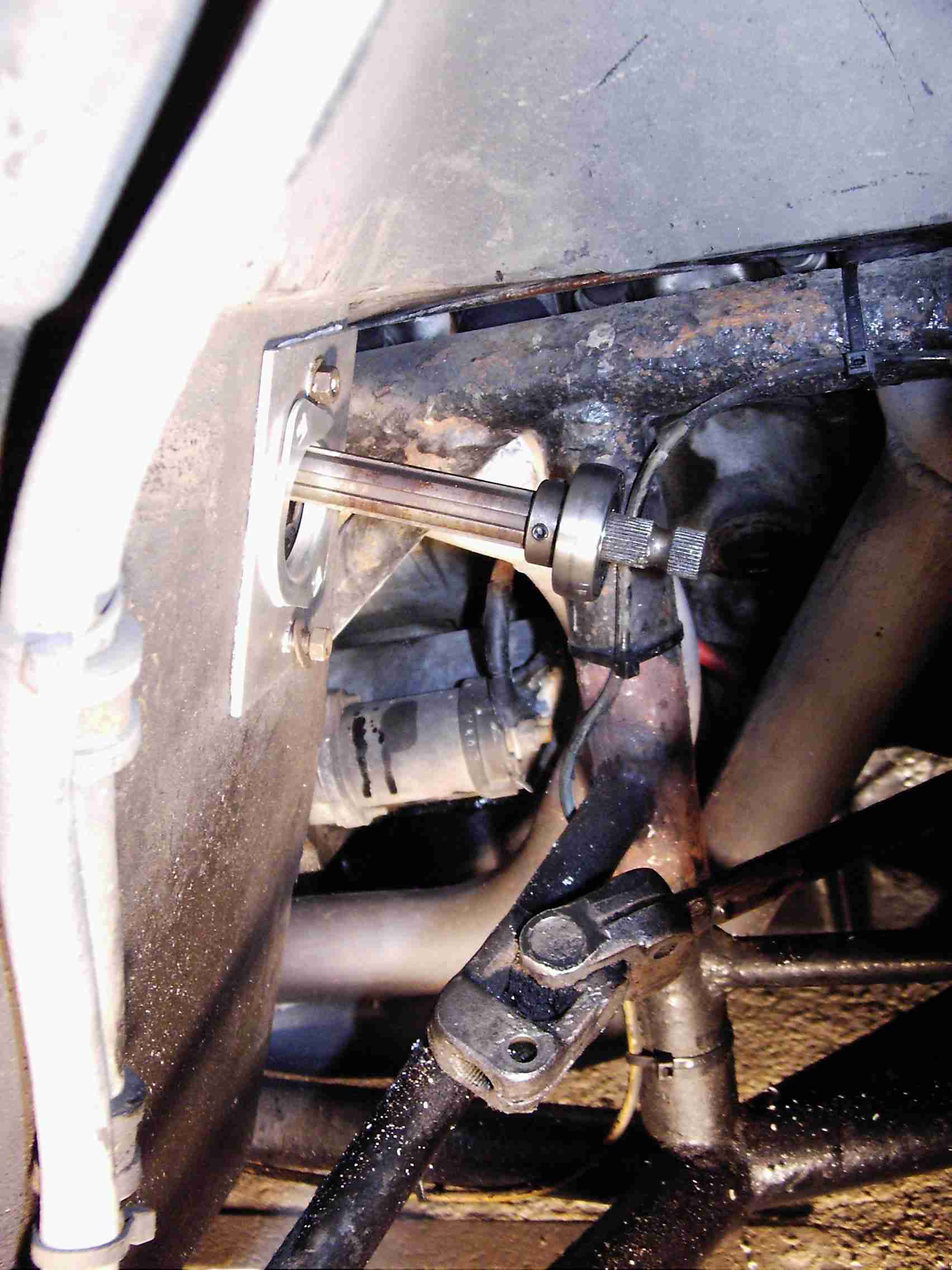
The rectangular alloy plate is necessary because the elliptical plates of the new bearing are significantly smaller than the original bush's mounting plate, so not only would the bolt holes not line up but the hole cut in the GRP was so large that water would easily get past the new mounting plate. I cut a slab of alloy that is held by the original mounting bolts and rotated the new bearing on it by a few degrees. It was the work of a few seconds to drill two more holes through the footwell, then the bearing was slid onto the column and all the bolts secured. I used silicon sealant between the footwell and each of the plates to provide water-resistance.
The old bush had only a small amount of wear. In fact it was mostly that the bush had elongated in one direction. I didn't expect a huge amount of improvement, but huge it certainly is. Previously, there was always a small amount of play evident if you shook the steering wheel. Whilst driving, the wheel would shake and shudder, almost as if the column universal joints were worn, which they weren't.
With the new bearing fitted there's no juddering, the steering wheel doesn't move and most remarkably, the actual 'feel' of the steering and what the front wheels are doing, has been transformed. I would honestly never have believed that it could be improved so much, in so simple a way, given how little wear I thought the old bush had.
In this close-up you can see the alloy mounting plate and one of the elliptical plates 'tacked' with grey silicon, with the new bearing in situ on the column. The bearing is a 'sealed-for-life' design with rubber seals either side of the balls.
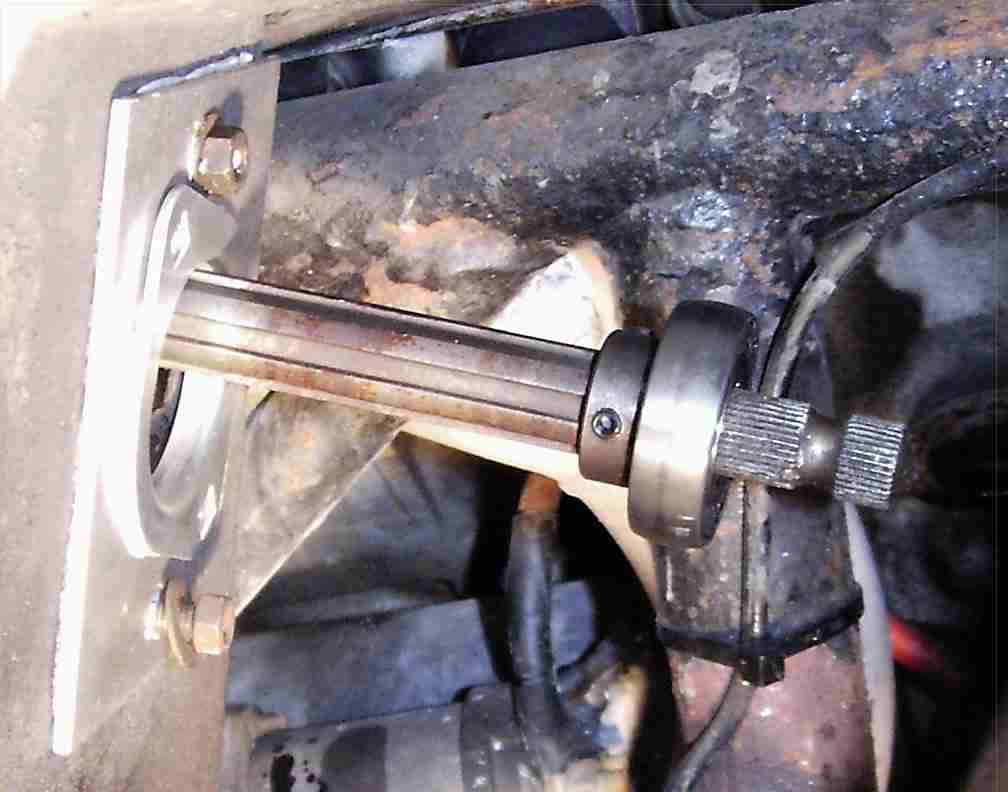
My car had been suffering for some time from an excess of bump-steer. As time went by I resigned myself to having to perform a complete suspension rebuild. Whilst I was enjoying myself on the bike in 2008 the car lay unused, although I had to pull it out of the garage from time to time to get my welding gear out. During one such event I found that the steering had suddenly become very heavy; it soon became apparent that the steering rack had leaked all the fluid into the drip tray! I'd had a leak a few years earlier which was traced to an O-ring that seals the rack tube to the casting that houses the pinion. For some reason the leak had recurred. I jacked the car up to strip the rack and whilst I was under there I realised that the offside tyre was badly worn for about a third of its width to the inside. The other tyre was still fine, so something had to be amiss. Extensive prying with a crowbar showed that the offside lower suspension arm was able to move around on its mounting bush. Given the amount of PAS fluid about the place I presumed the fluid had rotted the rubber bush. Nothing for it then, the suspension will HAVE to come apart! For the time being I repaired the rack (again!), but a few weeks ago when I decided it was high time the TVR was back on the road I took a deep breath and got stuck in.
There's not much to it. Cortina suspension, that is! For the last few years I've been hearing tales that you can't use standard spring compressors on a TVR Wedge because there's no room, or they foul on the cylinder heads, or the rune stones are in the wrong alignment or whatever. Well, it's complete cobblers. Way back when I was a lad and my father used to regularly work on Cortinas, all he had was a pair of standard spring compressors. All these years later and all I have is... a pair of standard spring compressors. They went on, there was plenty of room, nothing fouled and the suspension was apart in no time. Just to prove it, look here:
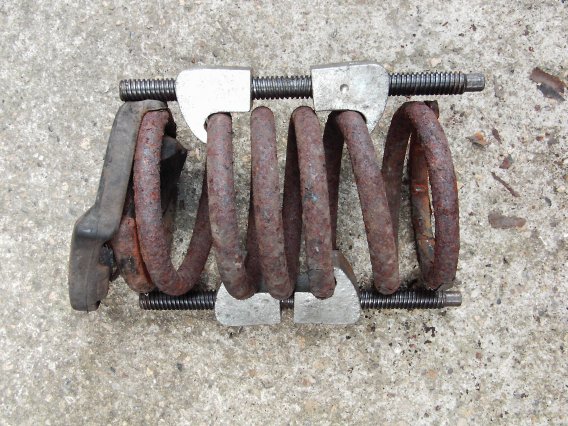
Granted, the rubber seat is wedged against the spring. Not a problem. The lower arm bush, however, WAS a problem. I don't know about the PAS fluid eating the rubber but a blind man could tell you that this one is shagged:
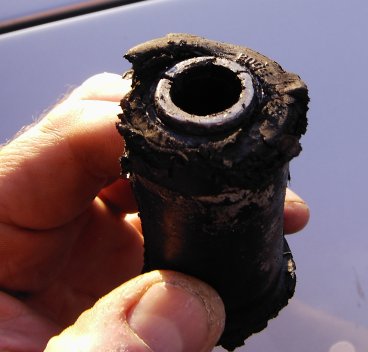
Yes, those cracks DO run right along the inner sleeve. No wonder the arm was moving. That bush and those fitted to the upper wishbone were Boge items; the replacements are some unbranded stuff, probably made in India from chewed-up elastic bands and llama droppings. Needless to say I didn't just bang the new bushes in and throw it back together (as would have happened when my old man did car repairs ;o) ... there was sandblasting to be done. Before:
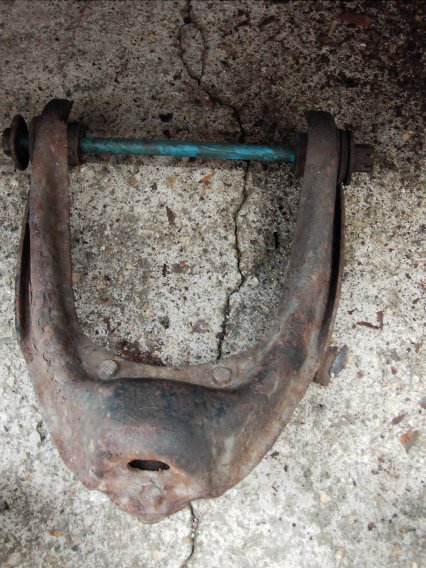
...and after:
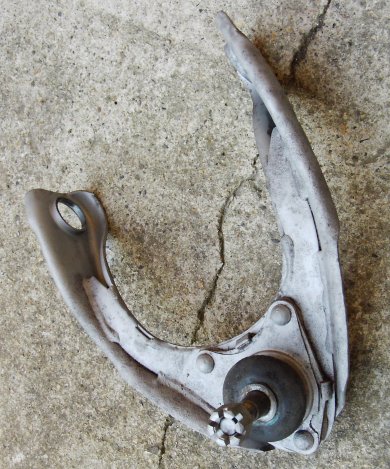
That upper balljoint is the original, factory-rivetted item and although I'd bought new ones, I honestly couldn't find any play in it that would suggest it was shot. So I left it. I painted the various parts before reassembly, including that spring, once I'd blasted 22 years of crud off it:
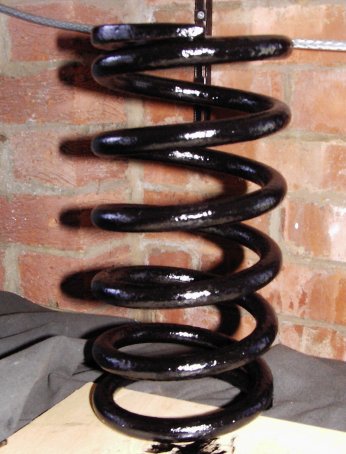
and the whole thing went back together almost as easily as it came apart, complete with new bolt through the lower arm pivot as the old one was suffering from contact with the cracked bush. There's the usual chassis rust too; here's a general view under the wheelarch with the suspension stripped off. I have new bushes for the tiebar; another job for another day...
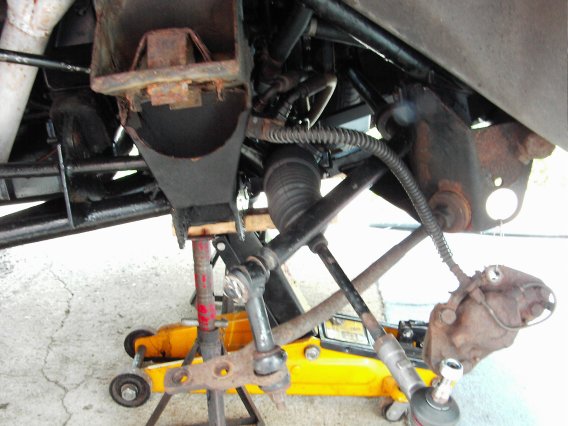
Meanwhile the bump-steer has gone, the tracking alignment was reset when I had a new pair of tyres fitted so for the moment all is well. There's still the rest of the suspension to attend to, though!
(Back) (Back to Wedges) (Back to Home)